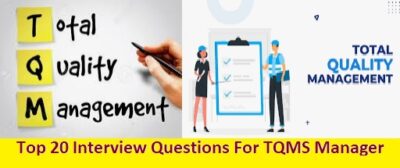In today’s industrial landscape, the efficient management of manufacturing operations is more crucial than ever. Significant losses and wastage on the shop floor can stem from a variety of sources such as operator errors, maintenance issues, process and tooling problems, and the non-availability of components. Other forms of waste include idle machines, idle manpower, equipment breakdowns, and defective parts. These issues can severely impact a company’s time, materials, and hard-earned reputation. The concept of zero tolerance for waste, defects, breakdowns, and accidents has become a prerequisite in the manufacturing and assembly industry. In response to these challenges, many industries worldwide have adopted the revolutionary concept of Total Productive Maintenance (TPM).
History
Total productive maintenance (TPM) began as a method of physical asset management, focusing on maintaining and improving manufacturing machinery to reduce an organization’s operating costs. After Nippon Denso received the first PM award in 1971, the Japanese Institute of Plant Maintenance (JIPM) broadened the scope to include 8 TPM activities, ensuring involvement from all sectors of manufacturing and non-manufacturing in lean manufacturing principles.
What is Total Productive Maintenance (TPM)?
TPM can be considered the medical science of machines. It is a maintenance program involving a newly defined concept for maintaining plants and equipment. The primary goal of TPM is to increase production while simultaneously boosting employee morale and job satisfaction. TPM emphasizes maintenance as a necessary and vital part of the business, transforming it from a non-profit activity to a crucial component of the manufacturing process. Downtime for maintenance is scheduled as part of the manufacturing day and, in some cases, as an integral part of the manufacturing process, aiming to minimize emergency and unscheduled maintenance.
Objectives of TPM
TPM was introduced to achieve several key objectives:
- Avoid wastage in a rapidly changing economic environment.
- Produce goods without compromising quality.
- Reduce costs.
- Enable the production of low batch quantities as quickly as possible.
- Ensure all goods sent to customers are non-defective.
Similarities and Differences between TQM and TPM
The TPM program closely resembles Total Quality Management (TQM) in several ways:
- Total commitment from upper-level management is required for both programs.
- Employees must be empowered to initiate corrective actions.
- Both programs require a long-term outlook, as implementation can take a year or more.
However, there are fundamental differences between TQM and TPM:
- TQM focuses on quality (output and effects) and systematizes management (software-oriented).
- TPM focuses on equipment (input and cause) and emphasizes employee participation (hardware-oriented).
Types of Maintenance
TPM encompasses various types of maintenance:
- Breakdown Maintenance: No maintenance is performed until equipment fails. This approach is used when equipment failure does not significantly impact operations or production.
- Preventive Maintenance (1951): Daily maintenance activities (cleaning, inspection, oiling, and re-tightening) designed to retain equipment in healthy condition and prevent failures. It includes:
- Periodic Maintenance (Time-Based Maintenance – TBM): Regularly scheduled inspections and servicing to prevent sudden failures.
- Predictive Maintenance: Predicts the service life of crucial parts based on inspection or diagnosis, aiming to use parts up to their service limits.
- Corrective Maintenance (1957): Improves equipment and its components to enable reliable preventive maintenance. This involves redesigning equipment to improve reliability and maintainability.
- Maintenance Prevention (1960): Focuses on designing new equipment with insights gained from current machine weaknesses to prevent failures, ease maintenance, and enhance safety and manufacturability.
History of TPM
TPM is an innovative Japanese concept with origins tracing back to 1951 when preventive maintenance was introduced in Japan, drawing from concepts developed in the USA. Nippondenso was the first company to introduce plant-wide preventive maintenance in 1960. As automation increased, Nippondenso implemented Autonomous Maintenance, where operators handled routine equipment maintenance, leading to the development of Productive Maintenance. This concept aimed to maximize plant and equipment effectiveness. Nippondenso’s efforts were recognized with the distinguished plant prize from the Japanese Institute of Plant Engineers (JIPE), making it the first company to obtain TPM certification.
TPM Targets
TPM aims to achieve several targets:
- Obtain a minimum of 90% Overall Equipment Effectiveness (OEE).
- Run machines even during lunch breaks.
- Operate to ensure no customer complaints.
- Reduce manufacturing costs by 30%.
- Achieve 100% success in delivering goods as required by customers.
- Maintain an accident-free environment.
- Increase worker suggestions by three times and develop multi-skilled, flexible workers.
Motives and Uniqueness of TPM
TPM adopts a life cycle approach to improve the overall performance of production equipment. It enhances productivity by highly motivated workers through job enlargement and the use of voluntary small group activities to identify failure causes and possible plant and equipment modifications. Unlike other concepts, TPM involves operators in the maintenance process, fostering a sense of ownership and responsibility for the equipment.
Direct and Indirect Benefits of TPM
Direct Benefits:
- Increased productivity and OEE.
- Reduced customer complaints.
- A 30% reduction in manufacturing costs.
- Meeting customer needs by delivering the right quantity at the right time, with the required quality.
- Reduced accidents.
Indirect Benefits:
- Higher employee confidence.
- A clean, neat, and attractive workplace.
- Positive changes in operator attitudes.
- Goal achievement through teamwork.
- Horizontal deployment of new concepts across the organization.
- Knowledge and experience sharing.
- A sense of machine ownership among workers.
Overall Equipment Effectiveness (OEE)
OEE is the primary measure associated with TPM, highlighting the “hidden capacity” within an organization. It evaluates both the efficiency (doing things right) and effectiveness (doing the right things) of equipment, incorporating three basic indicators of equipment performance and reliability:
- Availability (A): Proportion of time the machine is available out of the time it should be available.
- Performance Efficiency (PE): Actual versus design capacity.
- Quality Rate (Q): Percentage of good parts out of total produced.





Stages in TPM Implementation
TPM implementation involves several stages:
Step A – Preparatory Stage:
- Management Announcement: Announce TPM introduction and gain top management’s commitment and involvement.
- Initial Education and Propaganda: Conduct training based on employee needs.
- Setting up TPM and Departmental Committees: Establish committees to address all TPM needs.
- Establishing TPM Working System and Targets: Benchmark and set targets for each area/work station.
- Master Plan for Institutionalizing: Implement and institutionalize TPM, aiming for TPM awards as proof of success.
Step B – Introduction Stage:
Conduct a get-together with suppliers and customers to communicate quality, cost, and delivery schedules.
Step C – Implementation:
Execute eight activities known as the eight pillars of TPM development, focusing on production efficiency, initial control of new products and equipment, administrative efficiency, and safety and sanitation control.
Step D – Institutionalizing Stage:
Mature the TPM implementation activities and apply for TPM awards.
TPM Organization Structure
TPM involves a structured approach with a clear organizational structure that includes various teams and committees dedicated to different aspects of maintenance and production efficiency.

Pillars of TPM

Total Productive Maintenance (TPM) is a comprehensive approach to maintenance that maximizes equipment efficiency and integrates all employees into the maintenance process. This methodology, which originated in Japan, aims to enhance productivity by ensuring that equipment operates reliably and efficiently, minimizing downtime and defects. The success of TPM lies in its structured approach, characterized by its eight foundational pillars. These pillars are designed to address different aspects of the manufacturing process, involving everyone from operators to managers in a collective effort to improve equipment performance and overall productivity.
1. Autonomous Maintenance (Jishu Hozen)
Autonomous Maintenance is the cornerstone of TPM. It shifts the responsibility for routine maintenance activities to the operators who work with the equipment daily. This empowerment strategy aims to:
- Increase Equipment Familiarity: Operators who perform regular maintenance tasks such as cleaning, inspection, lubrication, and minor repairs become more familiar with their equipment. This familiarity helps them detect potential issues early, preventing breakdowns before they occur.
- Foster Ownership: By taking responsibility for the condition of their machines, operators develop a sense of ownership and pride in their work. This mindset shift leads to better care and a more proactive approach to maintenance.
- Enhance Skills: Training operators in basic maintenance skills not only improves their technical abilities but also boosts their confidence and job satisfaction.
Autonomous Maintenance reduces reliance on specialized maintenance personnel for minor issues, ensuring that equipment remains in optimal condition and operators are engaged in their roles.
2. Planned Maintenance
Planned Maintenance aims to prevent unexpected equipment failures through scheduled maintenance activities. It includes:
- Preventive Maintenance: Regularly scheduled inspections and servicing based on time intervals or usage. This proactive approach helps identify wear and tear before it leads to significant issues.
- Predictive Maintenance: Utilizing data and condition monitoring technologies to predict when maintenance should be performed. By analyzing trends and patterns, predictive maintenance can forecast potential failures and address them preemptively.
- Maintenance Planning and Scheduling: Developing detailed maintenance plans and schedules to ensure that all necessary tasks are completed without disrupting production. This planning involves coordination between maintenance and production teams to minimize downtime.
Planned Maintenance helps extend the lifespan of equipment, reduce unexpected breakdowns, and optimize maintenance resources.
3. Quality Maintenance
Quality Maintenance focuses on maintaining product quality by ensuring that equipment operates under optimal conditions. Key elements include:
- Root Cause Analysis: Identifying the root causes of defects and addressing them to prevent recurrence. This systematic approach to problem-solving ensures that issues are permanently resolved rather than temporarily fixed.
- Standard Operating Procedures (SOPs): Developing and implementing SOPs for all maintenance activities to ensure consistency and reliability. These procedures help maintain high-quality standards and minimize variations in maintenance practices.
- Continuous Improvement: Regularly reviewing and improving maintenance processes to enhance equipment performance and product quality. Continuous improvement initiatives, often driven by operator suggestions and kaizen activities, lead to incremental gains in quality and efficiency.
Quality Maintenance ensures that production processes yield high-quality products by keeping equipment in top condition and addressing any factors that could compromise quality.
4. Focused Improvement (Kobetsu Kaizen)
Focused Improvement, or Kobetsu Kaizen, involves small, continuous improvements that collectively lead to significant enhancements in equipment performance and productivity. This pillar includes:
- Kaizen Teams: Forming cross-functional teams to tackle specific issues or improvement opportunities. These teams bring together diverse perspectives and expertise to develop innovative solutions.
- Problem-Solving Techniques: Utilizing methodologies such as the PDCA (Plan-Do-Check-Act) cycle, root cause analysis, and Six Sigma to identify, analyze, and resolve issues.
- Data-Driven Decision Making: Collecting and analyzing data to understand performance trends, identify improvement areas, and measure the impact of changes. Data-driven insights guide improvement efforts and ensure they are targeted and effective.
Focused Improvement empowers employees to contribute to the ongoing enhancement of processes and equipment, fostering a culture of continuous improvement.
5. Early Equipment Management
Early Equipment Management integrates maintenance considerations into the design and installation of new equipment. This proactive approach ensures that new machinery is easier to maintain and operates efficiently from the start. It involves:
- Design for Maintainability: Collaborating with equipment designers to incorporate features that facilitate easy maintenance and repairs. This might include accessibility improvements, modular components, and standardized parts.
- Installation Planning: Carefully planning the installation of new equipment to minimize disruption and ensure smooth operation. This planning involves coordination between engineering, maintenance, and production teams.
- Training and Documentation: Providing comprehensive training for operators and maintenance personnel on the new equipment. Detailed documentation, including manuals and maintenance schedules, supports effective use and upkeep.
- Feedback Loops: Using feedback from operators and maintenance staff to inform future equipment design and selection. Lessons learned from existing machinery help improve the maintainability and performance of new equipment.
Early Equipment Management ensures that new equipment contributes to productivity and reliability goals from the outset, reducing the likelihood of early failures and performance issues.
6. Training and Education
Training and Education are critical for the success of TPM, as they ensure that all employees have the necessary skills and knowledge to perform their roles effectively. This pillar includes:
- Skill Development: Providing training programs that develop both technical and problem-solving skills. Training should be tailored to the needs of different roles, from operators to maintenance technicians and managers.
- Competency Assessment: Regularly assessing employee competencies to identify skill gaps and training needs. Competency assessments help ensure that training efforts are targeted and effective.
- Continuous Learning: Promoting a culture of continuous learning and development. Encouraging employees to pursue ongoing education and stay current with industry advancements.
- Knowledge Sharing: Facilitating the sharing of knowledge and best practices across the organization. This can be achieved through workshops, seminars, and collaborative platforms.
Training and Education ensure that employees are equipped to contribute to TPM initiatives and drive continuous improvement across the organization.
7. Safety, Health, and Environment (SHE)
Safety, Health, and Environment (SHE) focuses on creating a safe and healthy work environment, which is crucial for sustainable productivity. This pillar involves:
- Safety Programs: Implementing comprehensive safety programs to prevent accidents and injuries. Safety initiatives should include hazard identification, risk assessments, and the implementation of protective measures.
- Health Initiatives: Promoting employee health through wellness programs, ergonomic improvements, and access to healthcare services. Healthy employees are more productive and engaged.
- Environmental Management: Reducing the environmental impact of manufacturing operations through sustainable practices. This includes waste reduction, energy efficiency, and pollution control.
- Regulatory Compliance: Ensuring compliance with all relevant safety, health, and environmental regulations. Staying compliant helps avoid legal issues and enhances the company’s reputation.
The SHE pillar creates a foundation for a productive workplace by prioritizing the well-being of employees and the environment.
8. Office TPM
Office TPM extends the principles of TPM to administrative and support functions, recognizing that efficiency in these areas contributes to overall productivity. This pillar includes:
- Process Improvement: Streamlining administrative processes to enhance efficiency and reduce waste. Applying lean principles to office activities can uncover significant improvements.
- Support Function Integration: Integrating support functions such as human resources, finance, and procurement into the TPM framework. Coordinated efforts ensure that all departments contribute to maintenance and production goals.
- Workplace Organization: Applying 5S principles to office environments to create organized, efficient, and pleasant workspaces. A well-organized office supports better productivity and employee satisfaction.
- Customer Focus: Enhancing customer satisfaction by improving the efficiency and effectiveness of office processes. Efficient administrative processes contribute to better service delivery and customer experience.
Office TPM acknowledges that every part of the organization plays a role in achieving TPM goals, ensuring a holistic approach to productivity and quality.
Conclusion
The eight pillars of Total Productive Maintenance (TPM) provide a comprehensive framework for enhancing equipment reliability, product quality, and overall operational efficiency. By involving employees at all levels and focusing on proactive maintenance strategies, TPM fosters a culture of continuous improvement and engagement. Each pillar addresses a specific aspect of the manufacturing process, from empowering operators with autonomous maintenance to integrating maintenance considerations into equipment design. Together, these pillars form a robust foundation for achieving TPM’s ultimate goals: zero defects, zero breakdowns, and zero accidents.
Implementing TPM and its pillars requires commitment, training, and a willingness to embrace change. However, the benefits are substantial, including increased productivity, reduced costs, improved employee morale, and a safer, more sustainable work environment. By adopting TPM, organizations can build a resilient and efficient manufacturing operation capable of thriving in today’s competitive landscape.
For further reading on TPM and its implementation, you can explore additional resources and case studies available on JIPM(Japanese Institute of Plant Maintenance)
Click here for more article
- Top 15 MNCs Every Mechanical Engineer Dreams of Joining in 2025

- How to Digitize and Automate the CAPA Process

- Top 10 Essential Tools Every Mechanical Engineer Should Know
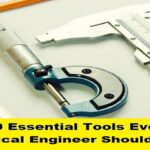
- What is GD&T (Geometric Dimensioning & Tolerancing) ?

- Principles of IATF 16949: A Guide to Quality Management
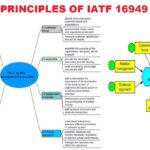
- The Evolution of IATF 16949: The Automotive Quality Standard

- Top Interview Questions Related to SPC ,Cp and Cpk
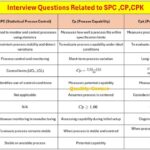
- Difference Between Purchase and Procurement
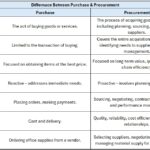
- Master Your Job Interview: Top 70 Common Interview Questions and Answers

- What Is Standard Deviation ?

- Top Interview Questions and Answers on SPC
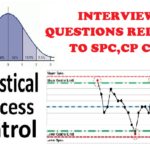
- Top 20 Interview Questions For Customer Quality Manager ?



